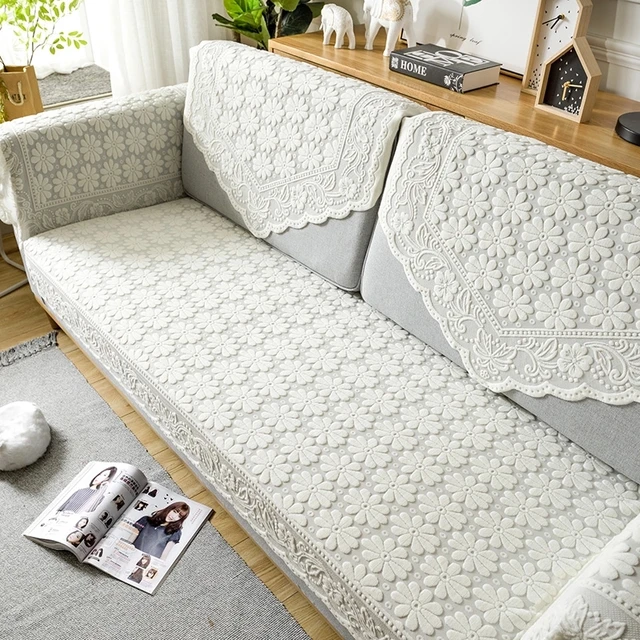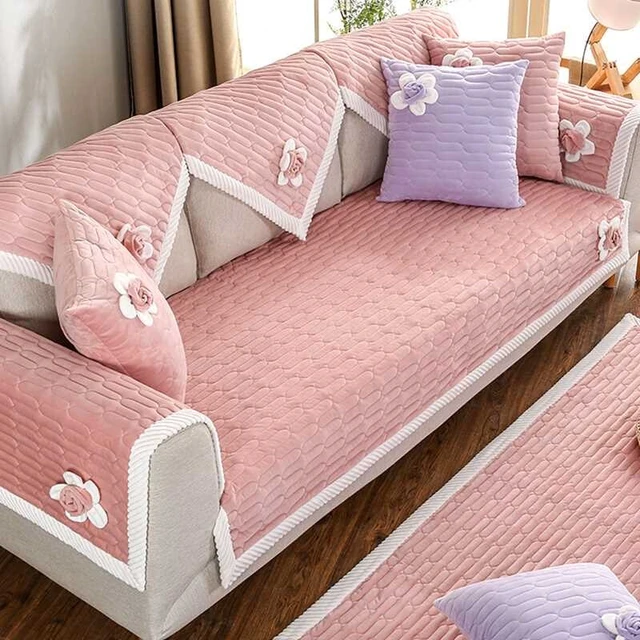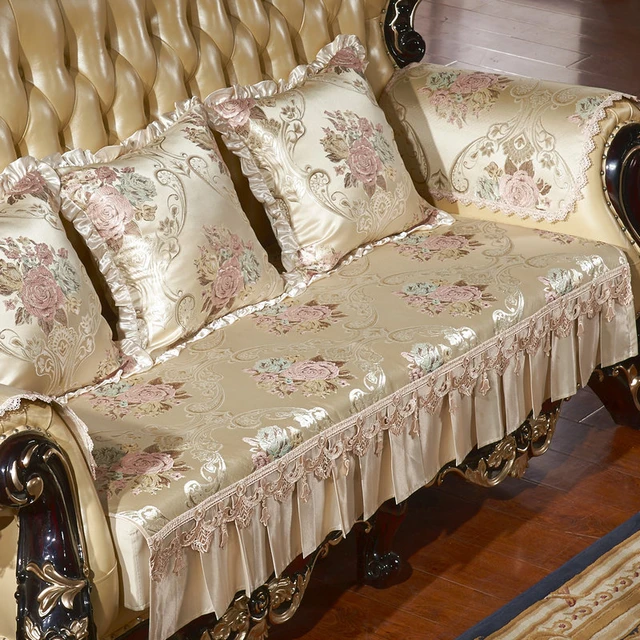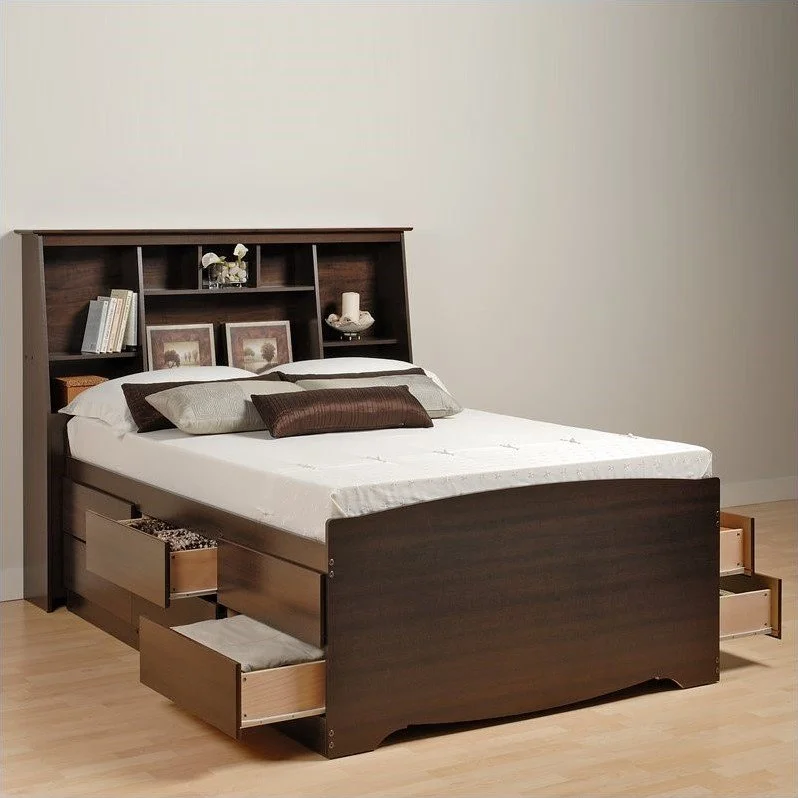 Introduction:
Introduction:
A sofa is a significant investment in your living space, and over time, it may start to show signs of wear and tear. Instead of replacing it, a DIY sofa cover can be a cost-effective and creative solution to refresh and transform your sofa. By making your own sofa cover, you can customize the design, choose fabric that suits your style, and give your sofa a fresh new look. In this comprehensive guide, we will explore the benefits of a DIY sofa cover, discuss the necessary materials and measurements, and provide step-by-step instructions for creating your own. By embracing your creativity, you can elevate the aesthetics of your living space without breaking the bank.
 Benefits of a DIY Sofa Cover:
Benefits of a DIY Sofa Cover:
Cost-Effective:
Making your own sofa cover is often more affordable than purchasing a new sofa or hiring a professional to reupholster it.
You can save money by selecting cost-effective materials and reusing your existing sofa.
Customizable Design:
DIY sofa covers allow you to customize the design, fabric, and color to match your personal style and the overall aesthetics of your home.
You have the freedom to choose patterns, textures, and embellishments that reflect your creativity.
Versatility:
DIY sofa covers offer versatility, as you can change the cover whenever you desire a new look or want to adapt your sofa to different seasons or occasions.
This flexibility allows you to experiment with various styles without committing to a permanent change.
Protection and Maintenance:
A DIY sofa cover provides an extra layer of protection, shielding your sofa from stains, spills, pet hair, and everyday wear and tear.
It also makes cleaning and maintenance easier, as you can remove and wash the cover as needed.
 Disadvantages to consider:
Disadvantages to consider:
While making a DIY sofa cover can be a creative and cost-effective solution, there are some potential drawbacks and disadvantages to consider. Here are a few of them:
Fit and Appearance:
Creating a DIY sofa cover may not provide the same tailored fit and polished appearance as professionally made or pre-made covers. Achieving a precise fit can be challenging, especially for complex sofa shapes or unique designs. The final result may not look as seamless or professional as desired.
Fabric Selection and Quality:
Selecting the right fabric for a DIY sofa cover is crucial. While there are many options available, finding the ideal fabric that matches your desired aesthetic and durability requirements can be time-consuming and may require some trial and error. Additionally, the quality of the fabric may vary, and using low-quality materials or improper fabric selection can result in a cover that wears out quickly or does not meet your expectations.
Time and Skill Requirements:
Creating a DIY sofa cover can be a time-consuming process, especially for those with limited sewing skills or experience. Measuring, cutting, and sewing the fabric accurately can be challenging, and it may require a significant investment of time and effort to achieve satisfactory results.
Durability and Longevity:
The durability and longevity of a DIY sofa cover may be lower compared to professionally made or pre-made covers. The quality of stitching and fabric, as well as the overall construction, can impact the cover’s ability to withstand regular use, washing, and wear and tear. DIY covers may need frequent replacement or repairs, depending on the fabric used and the level of use.
Limited Customization Options:
While DIY sofa covers provide some level of customization, they may not offer the same range of options as professionally made or pre-made covers. Features like intricate patterns, specialized fabrics, or complex designs may be more difficult to achieve with a DIY approach.
Professional Finish:
DIY sofa covers may not have the same professional finish as covers made by skilled professionals. Trained upholsterers often have the expertise and equipment necessary to create covers that fit snugly, have clean seams, and look polished. Achieving the same level of finish with a DIY approach can be challenging.
It’s important to consider your sewing skills, available time, and desired results before deciding to make a DIY sofa cover. Understanding the potential drawbacks and limitations can help you make an informed decision and assess whether DIY is the right choice for your specific situation.
 Materials and Measurements:
Materials and Measurements:
Fabric:
Choose a durable and easy-to-clean fabric that suits your style and complements your living space.
Consider factors such as color, texture, pattern, and fabric weight.
Measuring the Sofa:
Measure the length, width, and height of your sofa to determine the dimensions of the cover.
Take precise measurements, considering the shape and contours of the sofa.
Additional Materials:
In addition to the fabric, you will need sewing supplies such as a sewing machine, thread, pins, measuring tape, scissors, and any desired embellishments.
Step-by-Step Instructions:
Creating a Pattern:
Using the measurements of your sofa, create a pattern for the cover.
Consider any additional details, such as armrest covers, cushion covers, or a skirt.
Cutting the Fabric:
Lay out the fabric according to the pattern and cut the pieces accordingly.
Leave seam allowances for sewing and account for any desired margins or hems.
Sewing the Pieces:
Assemble the fabric pieces, pinning them together with the right sides facing each other.
Use a sewing machine to sew along the edges, leaving openings for cushions or other necessary access points.
Fitting and Adjusting:
Fit the cover onto your sofa, making any necessary adjustments to ensure a snug and tailored fit.
Pin and mark any areas that require alterations or additional stitching.
Finishing Touches:
Complete the cover by sewing any remaining openings, hemming the edges, and adding any desired embellishments.
Ensure that all seams are secure and the cover is properly fitted to the sofa.
Maintenance and Care:
Regularly remove and wash the DIY sofa cover according to the fabric’s care instructions.
Treat stains or spills promptly to prevent them from setting into the fabric.
Provide gentle care and maintenance to ensure the longevity of the cover.
 Conclusion:
Conclusion:
A DIY sofa cover offers a cost-effective and creative solution to refresh and transform your sofa. By customizing the design and fabric, you can elevate the aesthetics of your living space and protect your sofa from everyday wear and tear. Gather the necessary materials, take accurate measurements, and follow step-by-step instructions to create your own unique sofa cover. Enjoy the versatility, cost savings, and customization possibilities that come with a DIY sofa cover, and embrace the opportunity to showcase your creativity and style. By making your own sofa cover, you can give your living space a fresh new look while preserving your existing furniture investment.And it echoes the surrounding accessories, such as vases, plates, and time lock, to create a satisfying living space.

